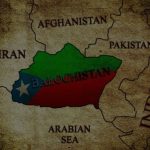Sajid Mir – 26/11 Mastermind, Poisoned???
In the 1980s, the relations between America and Cuba were strained, partly because Cuba was a communist country. Cuba, under the influence of communist Russia, was seen as a threat in America’s backyard. Russia used Cuba to promote drug trade in America. The United States, through international organizations and its own government pressure, repeatedly reminded the Cuban government to arrest these drug dealers linked to Russia. Under pressure, Cuba would arrest these traffickers, but in jail, their network would often expand. In 1980, the U.S. Central Intelligence Agency (CIA) devised a strategy to break this jail network. They noticed that chicken was commonly used in meals provided to prisoners, similar to how rice and lentils are common in our [Indian] meals. The CIA observed that the chicken used in the jails was bred in nearby farms. During an operation, they introduced a poisonous agent into the feed of these chickens. This poison was designed to be harmless to the chickens but lethal to humans upon consumption. This method was used to poison several Russian mafia leaders and drug traffickers in Cuban jails, resulting in severe illness or death for many.
This example relates to Lashkar Commander Sajid Mir, who was born in 1976 in Lahore, Pakistan. He joined the Markaz Uddawa religious school in the 1980s at the age of 13 and was greatly influenced by a sermon by Maulana Hafiz Saeed. In 1990, when Maulana Hafiz Saeed founded Lashkar-e-Taiba, Sajid Mir joined this organization. Contrary to common belief that Lashkar-e-Taiba is solely focused against India, it actually has connections ranging from Al-Qaeda to other international organizations and operates in various countries from Paris to Chechnya to Afghanistan to India. Lashkar-e-Taiba has branches in Indonesia, Malaysia, Bosnia, Chechnya, Afghanistan, and India, and rotates its manpower across this vast network. Sajid Mir took advantage of his international exposure, but after the 9/11 attacks in 2001, the U.S. pressured Pakistan to disband Lashkar-e-Taiba. Following 9/11, Lashkar-e-Taiba launched a new campaign to gradually divert its manpower into other activities. Hafiz Saeed appointed Sajid Mir as the Deputy Director of the Foreign Operations Unit. In 2002, when Sajid Mir became the community chief of Lashkar, he decided to expand operations from Europe to America.
At that time, in 2002, Osama Bin Laden arranged a meeting between Sajid Mir and a French convert to Islam and terrorist, Vili Brigitte. Brigitte, being a Caucasian from France, was not easily identifiable as a member of Al-Qaeda. Bin Laden tasked Brigitte to work with Yakub Rahman Lakhvi, the military chief of Lashkar, and Sajid Mir, who was appointed as the Deputy Director of the foreign operation unit of Lashkar-e-Taiba. These three, including Brigitte, Mir, and Lakhvi, first opened an office in Muridke, Pakistan. Their decision then was to proceed to America. In 2004, on October 14th, the ISI issued a new passport for Sajid Mir under the name ‘Exodo’ with the number 381676. Using this fake passport, Mir traveled to America with Vili Brigitte. In Virginia, they recruited a crucial person named Yong Ki Kwon, a Korean man who was significantly aiding Al-Qaeda at that time. The major logic behind recruiting this Korean man was his ability to go unnoticed. Kwon suggested that his close friend, the son of a Pakistani diplomat in America named Syed Salim Gilani, could help them. This son, Daud Syed Gilani, eventually met Sajid Mir. It was decided then to recruit Daud Syed Gilani and use him for operations in India.
Around 2005, Daud Syed Gilani, who was actually the son of Pakistani diplomat Syed Salim Gilani, applied to change his name in Virginia, America, to David Coleman Headley. After adopting this new identity, Mir brought Headley to Pakistan to meet Abdul Rahman Hashim Pasha, an ISI officer working with Major Iqbal on operations in India. Pasha and Iqbal, both ISI officers, recruited David Coleman Headley, formerly Daud Syed Gilani, on Sajid Mir’s recommendation to think of bigger operations in India. After providing $25,000 to Gilani, now Headley, he first visited India in 2005. In Mumbai, he conducted thorough surveys of potential targets, including the Taj Hotel, and frequently met with Rahul Bhatt, the son of Mahesh Bhatt. He gathered intelligence and shared it with Major Iqbal and Abdul Rahman Hashim Pasha. After planning and coordinating the attacks, Headley traveled from Mumbai to Dubai and then to Lahore to plot the 26/11 Mumbai attacks with Sajid Mir.
The live monitoring of the 26/11 attacks was tracked by the Research and Analysis Wing from Muridke and Lahore, where Sajid Mir and David Coleman Headley were coordinating. After the attacks, Headley returned to America. The Indian security agencies informed the U.S. that Headley, involved in the 26/11 attacks, was in Atlanta. The U.S. arrested him, and a team from India also interviewed him. Headley admitted the involvement of Abdul Rahman Ashim Pasha, Major Iqbal, and Sajid Mir in the 26/11 attacks. Despite multiple interrogations by India and other teams, the U.S. has not extradited David Coleman Headley to India. This reflects the duplicity of the U.S., which claims to be against terrorism but shelters individuals like Headley.
Sajid Mir, who was revealed to be in Pakistan, was the target to be neutralized. Sajid Mir, one of the masterminds of the dastardly 26/11 Mumbai terror attacks, has been allegedly poisoned in the Central Jail of Dera Ghazi Khan in Pakistan, according to unconfirmed reports. The unsubstantiated reports, which DOI cannot confirm at this stage, suggest that Mir was allegedly airlifted by the Pakistan Army to CMH Institute of Medical Sciences, Bahawalpur after being administered the poison. He was shifted from the Lahore central jail a few months ago, where he had been holed up since last year.
May be our boys are playing god, this time!!!






